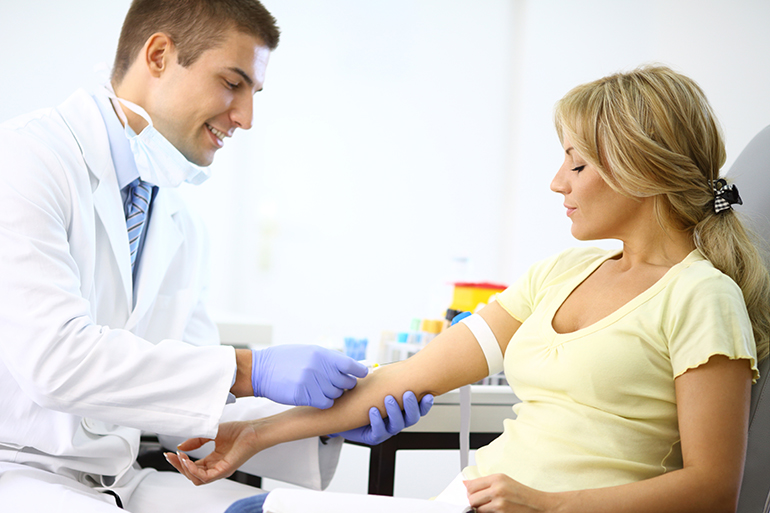January Is National Blood Donor Month, and the East End Is Taking Donations

Want to keep giving even after the holidays have ended? January is the perfect time to think about a different kind of gift—lifesaving blood products for people in your own community—during National Blood Donor Month. According to the Red Cross, 21 million blood products are transfused every year in the United States. That translates to 36,000 units of red blood cells (the ones that carry oxygen throughout your body), 7,000 units of platelets (the ones that keep you from bleeding too much), and 10,000 units of plasma (the liquid part of the blood that contains important blood clotting proteins) per day.
Patients receive blood products for all kinds of reasons—some after traumatic accidents or unexpected bleeding during childbirth or surgery, others during chemotherapy for cancer or when receiving other strong medications, or those with chronic illnesses that keep their bodies from making enough of their own cells who may require transfusions every 3–4 weeks for their whole lives. Blood products are needed for patients of all ages, from premature newborns to senior citizens. And, because blood products can’t last indefinitely on the shelf, the need for donors persists every day, all year long.
Consider “Joey,” a 23-year-old man on the East End with an aggressive leukemia. Chemotherapy causes his body to stop making enough of his own red blood cells and platelets, leaving him exhausted, out of breath, with nosebleeds, bruising and at risk of more severe bleeding. A simple transfusion of red blood cells or platelets is literally lifesaving.
Most healthy adults can safely donate blood. The procedure is relatively quick—at about an hour for a simple donation—including screening, registration and recovery, and relatively painless (except for a brief needle stick). Once donated, blood can be split into its components—red blood cells, platelets, and plasma—tested for infectious diseases and stored until it’s needed. Red blood cells last about six weeks and platelets only last five days, so the need for blood donors continues every single day of the year.
There are also some more specialized forms of donation, such as “double red cell collection” and platelet donations that may take a bit longer but can help even more patients in need. Blood is transfused based on its type, both the major types (A, B, AB, and O) and even more minor subtypes. If you have a relatively rare blood type or if you are blood type O (which can be given to anyone, regardless of type), your blood might be in even higher demand.
In general, your body will replenish the blood you donated within a few days. It’s important to eat a snack after donating (which will be provided) and drink extra fluids in the 48 hours after your lifesaving gift. You should refrain from strenuous exercise and heavy lifting for about 24 hours. It’s safe (and encouraged!) to donate blood about every eight weeks.
Here are a few options for where to donate on the East End this month:
· Westhampton Beach Fire Department on January 21
· Southold Fire Department on January 22
· Peconic Bay Medical Center on January 23
· Town of Shelter Island at American Legion on January 26
· Hampton Bays Public Library on January 29
· Pierson Middle/High School on January 29
If you need more flexibility and are willing to head up–island, Stony Brook University Hospital and the NY Blood Center in Port Jefferson are available for donation 5–6 days a week as well. For more information, or other donation sites, you can visit the NY Blood Center website at nybloodcenter.org.
Dr. Rina Meyer is a board certified pediatric hematologist-oncologist at Stony Brook Children’s and Assistant Professor of Clinical Pediatrics at the Renaissance School of Medicine at Stony Brook University. Her views are her own and do not necessarily represent the views of Stony Brook Children’s and the Renaissance School of Medicine.









